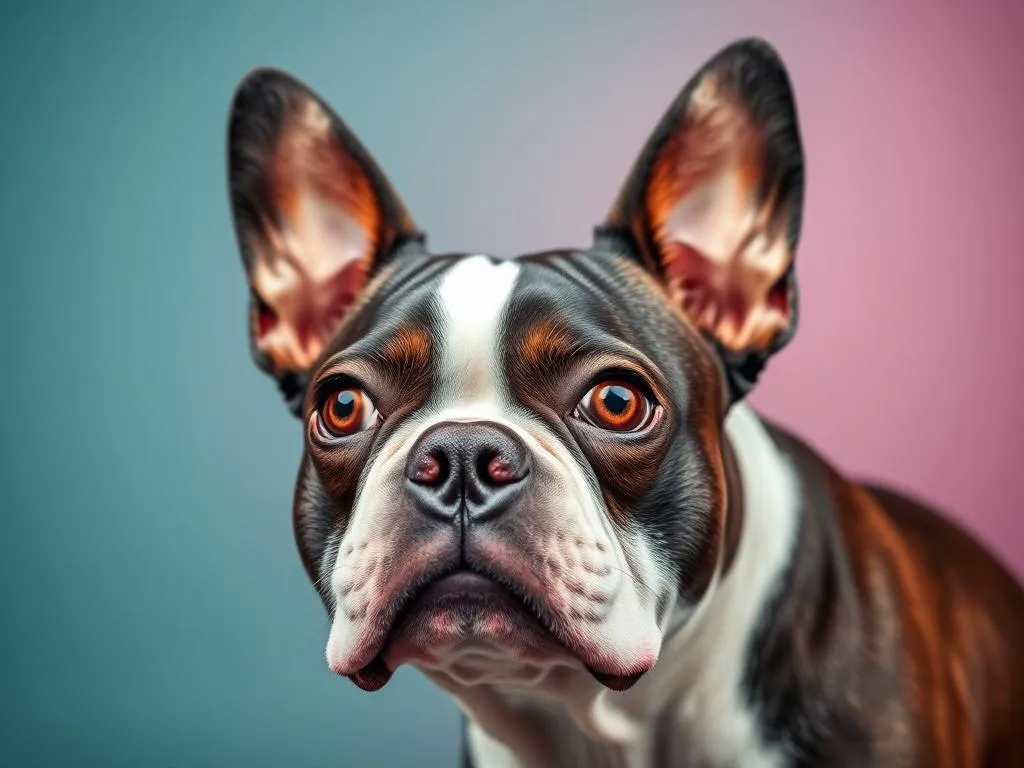
Boston Terriers are a beloved breed known for their playful disposition and distinctive looks. Their compact size and charming personalities make them wonderful companions, but one aspect that often captures the attention of potential dog owners is their colors. The colors of Boston Terriers can vary significantly, and understanding these variations is essential for anyone considering bringing one into their home.
Understanding the Boston Terrier Breed
History and Origin
The Boston Terrier originated in the late 19th century in Boston, Massachusetts. This breed was developed from a mix between the English Bulldog and the now-extinct English Terrier. Initially bred for fighting, Boston Terriers eventually transitioned into family pets, thanks to their gentle temperament and affectionate nature. Over the years, the breed has evolved to become known as the “American Gentleman,” a nod to their tuxedo-like appearance and charming demeanor.
Characteristics of Boston Terriers
Boston Terriers are small, compact dogs typically weighing between 10 to 25 pounds. They have a sturdy build with a short, square muzzle and large, expressive eyes. Their coat is short and smooth, which adds to their overall appeal. In terms of temperament, Boston Terriers are intelligent, lively, and eager to please. They are known for their friendly disposition, making them great companions for families and individuals alike.
The Significance of Coat Colors
Role of Coat Color in Breed Standards
Coat color plays a crucial role in the standards set by various kennel clubs, including the American Kennel Club (AKC). These standards not only define the acceptable colors for Boston Terriers but also influence the perception of the breed’s quality. For instance, certain colors are more desirable in show rings, which can affect a breeder’s choices and a buyer’s preferences.
Impact of Color on Adoptions and Sales
The color of a Boston Terrier can significantly influence its popularity and market demand. Some colors, such as black and white, are more common and tend to be more readily available. Others, like blue or chocolate, may fetch a higher price due to their rarity. Potential dog owners often have personal preferences when it comes to color, which can affect their decision to adopt or purchase.
Common Boston Terrier Colors
Classic Colors
-
Black and White: This classic color combination is the most recognized for Boston Terriers. The black coat with white markings gives them a dapper, tuxedo-like appearance.
-
Brindle and White: This variation features a brindle coat with white markings. The brindle pattern consists of a mix of dark and light stripes, creating a unique look.
-
Seal and White: Seal Boston Terriers appear black from a distance, but upon closer inspection, their coat has a reddish hue. This color also features white markings, enhancing their classic appearance.
Rare Colors
-
Blue Boston Terriers: These dogs have a stunning blue-gray coat that is quite rare. The blue color is a result of a dilution gene and is often sought after by collectors.
-
Chocolate Boston Terriers: Another rare find, chocolate Boston Terriers have a rich, brown coat. This unique color has gained popularity in recent years.
-
Lilac and Merle Variations: Lilac Boston Terriers have a pale grayish-brown coat, while merle Boston Terriers showcase a marbled coat pattern. Both of these colors are rare and often controversial in breed standards.
Color Combinations
Boston Terriers often display a variety of patterns and combinations. The piebald pattern is common, characterized by large patches of white with another color. The tuxedo pattern, which is popular among Boston Terriers, features a primarily black coat with white markings on the chest and face, resembling a formal suit. Unique combinations can also emerge, enhancing the individuality of each dog.
Genetics Behind Boston Terrier Colors
Understanding Canine Genetics
To understand the colors of Boston Terriers, a basic knowledge of canine genetics is essential. Dog coloration is determined by a combination of dominant and recessive genes. The presence of specific genes can dictate not only the color but also the pattern of the coat.
Color Inheritance in Boston Terriers
The inheritance of colors in Boston Terriers follows predictable patterns. For example, if both parents carry the gene for brindle, there is a higher likelihood that their puppies will also be brindle. Responsible breeding practices can help ensure that desired colors are passed down, but this should always be balanced with the health and well-being of the dogs.
Caring for Your Boston Terrier Based on Color
Grooming Needs
While Boston Terriers require regular grooming regardless of their color, certain colors may need additional care. For instance, lighter-colored dogs may show dirt and stains more easily, necessitating more frequent baths. Regular brushing helps keep their coat healthy and can reduce shedding, which is beneficial for all coat colors.
Health Considerations
Certain colors are associated with specific health issues. For example, blue Boston Terriers may be more prone to skin conditions due to their unique pigmentation. It’s essential to monitor your dog’s health closely and consult with a veterinarian if any unusual symptoms arise. Regular vet check-ups are crucial for addressing breed-specific health concerns, regardless of coat color.
Choosing the Right Color for Your Lifestyle
Considerations for First-Time Owners
When selecting a Boston Terrier, it’s essential to consider various factors beyond just color. First-time owners should think about their lifestyle, activity levels, and household dynamics. Some colors may be more widely available, but it’s important to choose a dog that fits well with your living situation and family.
Popular Colors Among Owners
Trends in color preferences can shift over time. Currently, classic colors like black and white remain highly favored among Boston Terrier enthusiasts. However, the rise in popularity of rare colors such as blue and chocolate has shifted market dynamics. Many owners appreciate the unique aesthetic of these rarer shades and enjoy sharing their experiences with others.
Conclusion
Understanding the various colors of Boston Terriers is vital for potential owners. From classic combinations to rare finds, the colors not only highlight the breed’s diversity but also play a significant role in their appeal. While choosing a Boston Terrier, it’s crucial to consider all factors—health, temperament, and lifestyle—rather than focusing solely on color. This comprehensive understanding will help ensure a rewarding experience for both the owner and the dog.
By taking the time to learn about the colors and characteristics of Boston Terriers, you can make an informed decision and find the perfect companion to enrich your life.









